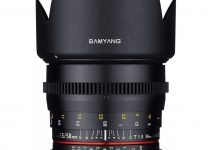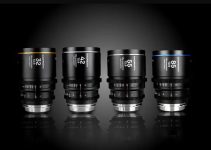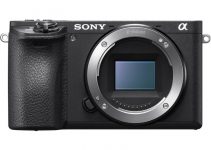We’ve all seen the new add-ons to DJI lineup. On one hand, we have the Osmo Pocket, a small pocket camera that’s easy to use and set up with a 3-axis gimbal on top, while on the other, there’s the Osmo Action – DJI’s grand entrance into the action cam market, formerly established as an exclusive GoPro territory almost inaccessible by other rivals.
These two seem to be completely different beasts, with no kind of overlap between them, but Mauro at MAURO’S FILMS looks at them from a bit different perspective by directly comparing both cameras side-by-side. Could it be that there is actually a possible rivalry inside DJI itself? Let’s find out!
Even though the two offerings seem completely different at first sight, they have certain similarities worth mentioning. For starters, both devices provide excellent image stabilization – the Pocket has a motorized active one using a true mechanical gimbal, while the Action comes with an internal electronic stabilization feature called RockSteady.
Despite the fundamental conceptual differences in that regard, both devices provide extremely close results which can be clearly seen from both the walking and running tests showcased in the video.
Furthermore, the Osmo Action has a much wider FOV (field of view) at 145° with an aperture of f2.8, while the Pocket has just 80° with an f2.0 aperture. The sensor is exactly the same size on both devices (approximately 12MP) and that would lean for a better low light performance on the Pocket due to the slightly faster aperture.
Both units have some nice pro features too such as full manual control on shutter and ISO as well as the Cinelike-D picture profile which definitely brings more flexibility when it comes to color grading in post.
True to its nature of action cam, the Osmo Action has a removable battery and a three slot charger, giving you the option to be always ready to shoot, while the Osmo Pocket has an internal battery. But do not be fooled, that does not mean you have to stop and charge the latter once its battery is completely drained.
The Pocket has, in fact, a USB-C port that allows you to hook up a power bank and keep shooting if the battery goes down. Unfortunately, the Osmo Pocket can’t rival the slow-motion capabilities of the Action or the HDR profile with its 120fps in HD versus the whopping 240fps available on the Osmo Action in the same mode.
In the meantime, the dual screen on the Action is a feature that surely will come on many other action cams in the future. It makes setting up the camera in tight spaces so much easier, not the mention the various accessories and mounts you have at your disposal.
Both counterparts have ND filters available (a screw type for the Action and a magnetic one for the Pocket) and both take advantage of the Mimo app from DJI. The main difference is that the Action will connect straight out of the box wirelessly, whereas the Pocket can be tethered to your phone either via a cable or through the optional wireless adapter.
The cherry on top for the Osmo Action is the water resistance and ruggedness that make it the perfect action cam, especially if you need to predominantly film with it in extreme conditions out in the field.
On the other hand, if your filmmaking is more traditional, you’d like to have all controls of the camera in your hand and you don’t mind the narrower field of view, then the Osmo Pocket has got you covered. So, which one would you pick?
[source: MAURO’S FILMS]
Order Links:
DJI Osmo Action 4K Camera (B&H, Amazon)
DJ Osmo Pocket Gimbal (B&H, Amazon)
Disclaimer: As an Amazon Associate partner and participant in B&H and Adorama Affiliate programmes, we earn a small comission from each purchase made through the affiliate links listed above at no additional cost to you.




